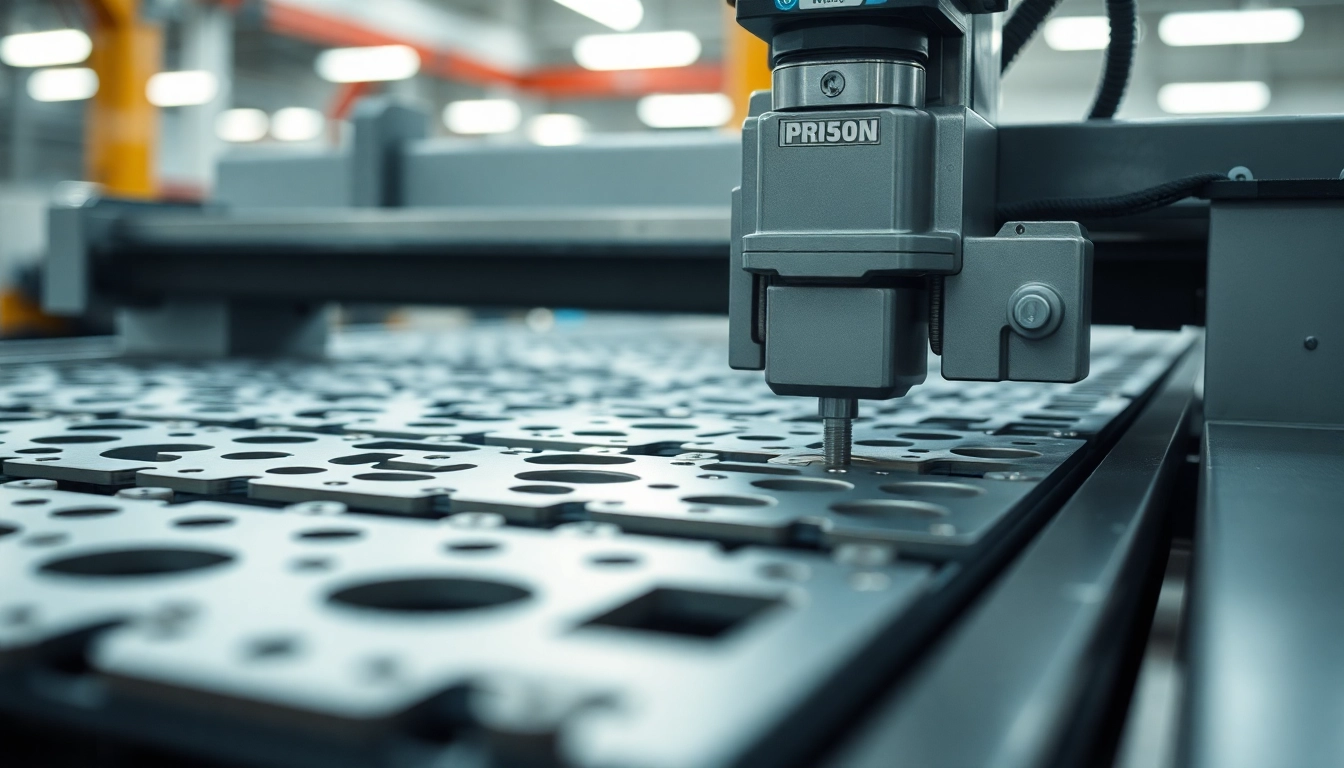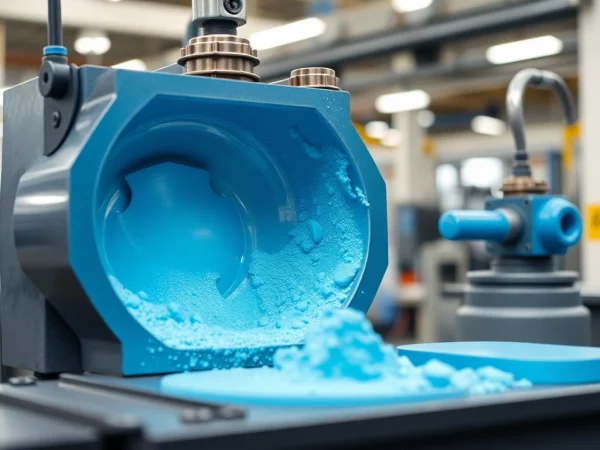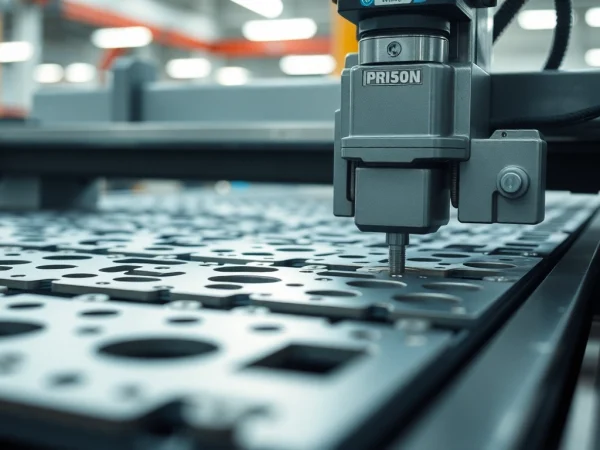Essential Insights into Precision Die Cutting: Techniques, Applications, and Quality Standards
Understanding Precision Die Cutting
What is Precision Die Cutting?
Precision die cutting is a highly accurate manufacturing process that involves cutting materials into specific shapes and sizes using specialized dies. This process is utilized across various industries, employing advanced technology to produce high-quality, custom parts with minimal waste. The precision aspect refers to the ability to maintain tight tolerances on dimensions and repeatability, which is crucial for the integrity of the final product.
Unlike generic die cutting methods, precision die cutting uses CNC (Computer Numerical Control) machines combined with rotary blade systems or flatbed presses that ensure consistent cuts, regardless of the complexity of the design. The accuracy of this technique enables manufacturers to create intricate components with a uniform finish that meets stringent industry standards.
For those seeking detailed insights into precision die cutting, it’s essential to understand its applications, advantages, and the technology that enables these processes.
Key Advantages of Precision Die Cutting
The advantages of precision die cutting go beyond the mere act of cutting materials; they touch upon economic efficiency, material waste reduction, and product quality. Here are some key benefits:
- High Accuracy: Precision die cutting allows for tight tolerances, often within ±0.001 inches, which is vital for applications requiring exact dimensions.
- Efficiency: The automated process reduces the time needed for setup and production, leading to faster turnaround times and increased productivity.
- Material Versatility: This technique can work with a variety of materials, including paper, plastic, rubber, and metals, making it suitable for diverse manufacturing sectors.
- Reduced Waste: By achieving precise cuts on the first pass, this technique minimizes material waste, resulting in cost savings.
- Complex Shapes: Precision die cutting can produce intricate shapes and designs that other cutting methods struggle to achieve.
Differentiating Between Types of Die Cutting Techniques
There are various die cutting techniques, each serving distinct purposes depending on the required precision and application. The primary types include:
- Rotary Die Cutting: This method uses a cylindrical die that rolls across the material, making it ideal for high-volume runs where consistent shapes are needed.
- Flatbed Die Cutting: In this method, a flat die presses down onto the material, making it suitable for thicker materials and more intricate shapes.
- Laser Die Cutting: Utilizing laser technology, this method provides even higher precision and is ideal for detailed designs, although it may not be feasible for all materials.
- Steel Rule Die Cutting: This is a more traditional method where steel rules cut through the material using a flatbed die, suitable for short runs and varying designs.
Applications of Precision Die Cutting Across Industries
Use Cases in the Packaging Sector
In the packaging industry, precision die cutting plays a critical role in creating packaging solutions that are not only functional but also visually appealing. From high-end retail packaging to food and beverage containers, precision die cutting ensures uniformity and quality in packaging materials.
Common applications include:
- Custom Boxes: Precision die cutting allows for the manufacture of custom boxes tailored to specific product dimensions, enhancing branding and customer experience.
- Labels & Stickers: High-accuracy cuts ensure that labels fit seamlessly on products, maintaining clean edges and optimal adhesion.
- Point of Purchase Displays: Intricate designs for promotional displays create eye-catching marketing materials that enhance visibility in retail settings.
Medical Applications of Die Cutting
The medical industry relies heavily on precision die cutting for manufacturing components that require high hygiene standards and exacting specifications. Applications include:
- Medical Gaskets: Used in equipment to ensure a tight seal and prevent contamination.
- Custom Foam Products: Precision die cutting creates pads and cushions vital in medical devices and protective gear.
- Adhesive Tapes: Custom-shaped medical tapes used for wound care and bandaging.
Automotive Industry Benefits
The automotive industry is another significant beneficiary of precision die cutting. The ability to produce parts with precision directly impacts safety and performance. Applications include:
- Insulation Components: Die-cut insulation materials for soundproofing and thermal performance in vehicles.
- Seals and Gaskets: Critical for preventing leaks, these components must be manufactured accurately to ensure vehicle safety and longevity.
- Custom Interior Parts: High-quality cut materials enhance aesthetic and functional attributes within the vehicle.
Essential Tools and Materials for Precision Die Cutting
Common Materials Used in Precision Die Cutting
Precision die cutting can accommodate a wide range of materials, each with unique properties and applications. Common materials include:
- Papers and Cardstock: Widely used in packaging, brochures, and displays.
- Plastics: Used in various applications, from packaging to industrial parts.
- Foams: Employed in medical and automotive for cushioning and support.
- Metals: Thin metals can also be die-cut for aerospace and automotive parts.
- Adhesives: Used in manufacturing gaskets and bonds in multiple applications.
Choosing the Right Die Cutting Machine
Selecting the appropriate die cutting machine is crucial for achieving the desired precision and efficiency. Consider the following factors:
- Type of Material: Choose a machine that can handle the specific materials you intend to cut.
- Production Volume: For high-volume runs, rotary die cutters may be more effective, while flatbed die cutters could serve better for lower volumes.
- Design Complexity: Assess whether your designs require intricate cuts, which may need advanced machinery like laser die cutters for optimal results.
- Budget and Maintenance: Factor in not only the purchase price but also maintenance costs and availability of parts.
Understanding the Cost of Precision Die Cutting
The cost of precision die cutting can vary based on multiple factors, including:
- Material Type: Different materials have varying cost implications—for instance, metals typically cost more than paper.
- Setup Costs: Initial setup costs for the die and machine setup can be significant, but these are often amortized over larger runs.
- Production Volume: Higher volumes usually result in lower costs per unit due to economies of scale.
- Complexity of Design: More intricate designs may require advanced equipment, increasing costs.
Quality Standards and Best Practices
Measuring Precision: Tolerances and Specifications
In precision die cutting, tolerances are critical; they refer to the allowable deviation from specified dimensions. Standard tolerances in die cutting can range from ±0.005 to ±0.10 inches, depending on the die type and material used.
It’s essential to determine tolerances early in the design process to avoid excessive waste and ensure the finished product meets desired specifications.
Ensuring Quality Control in Die Cutting
Implementing strict quality control measures is pivotal in maintaining the integrity of die-cut products. Best practices include:
- Regular Maintenance: Performing regular maintenance on die cutting machines ensures consistency and precision in production.
- Sample Testing: Running initial samples allows for inspecting cuts for accuracy before full production.
- Operator Training: Ensuring that operators are well-trained on equipment and quality standards minimizes human errors.
Industry Standards for Precision Die Cutting
Various industry standards govern precision die cutting to ensure safety and quality in production. Key organizations and standards include:
- ISO 9001: A quality management standard that focuses on a range of quality management principles.
- AISC Standards: Governs precision for products used in building construction.
- ASTM Standards: Provide specifications for materials that are particularly relevant in the testing of properties.
Future Trends in Precision Die Cutting Technology
The Impact of Automation on Die Cutting
Automation continues to revolutionize precision die cutting, enhancing efficiency and reducing human error. Technologies such as robotics and AI can predict maintenance needs, optimize workflow and improve production speeds, thus decreasing lead times and costs.
As automation evolves, we can expect a transition towards fully automated die-cutting systems capable of operating with minimal human intervention while maintaining high-quality standards.
Sustainability Trends in Die Cutting Practices
With increasing focus on sustainability, precision die cutting practices are integrating eco-friendly approaches. These include:
- Material Sustainability: Utilizing recyclable materials and eco-friendlier options to contribute towards reducing waste.
- Energy Efficiency: Machines designed for lower energy consumption help companies reduce their carbon footprint.
- Waste Reduction Techniques: Implementing lean manufacturing principles helps to minimize waste in the die cutting process, promoting a cleaner production cycle.
Innovations and Technological Advancements
Technological advancements in precision die cutting are paving the way for new capabilities and enhanced processes. Innovations such as:
- 3D Die Cutting: This emerging technology allows for the creation of complex parts with intricate details.
- Smart Die Cutting: Equipped with sensors and data analysis, smart die cutting machines can improve performance and predictive maintenance.
- Hybrid Cutting Technologies: Combining laser and die cutting techniques, hybrid systems harness the benefits of both methods, offering unparalleled precision and flexibility.









